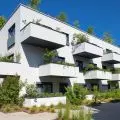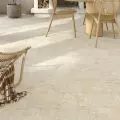Agnieszka Górska of the Faculty of Architecture at the Wrocław University of Technology has developed the "Braterska Przystań" project . Her proposal is a functional center, creating conditions for the proper development of children and young people. The author focuses on social problems concerning the re-socialization of young people.
visualization
© Agnieszka Górska
social problem
Socially maladjusted adolescents are usually sent to youth educational centers (YOIs), which, however, do not always provide effective rehabilitation. There are many reasons for this problem, including the condition of the juvenile justice system and the social conditions in which young people grow up. In addition to issues related to the legal system, the researchers highlight issues concerning the very structure of rehabilitation facilities and their operation.
cross-section
© Agnieszka Górska
Agnieszka Gorska's "Braterska Przystań" may be the answer to the infrastructural problems of educational institutions. It is not only a conceptual project, but above all a vision of a place where children and young people will find the right conditions for free development. The center's main goal is to eliminate the causes and manifestations of social maladjustment, prepare its alumni to live in accordance with legal and social norms and enable them to function independently in the future. Through its architecture and infrastructure, "Braterska Przystań" offers users not only safety, but also a sense of respect and space for full self-realization. It is a place where young people can find themselves and develop, with a better future in mind.
plan
© Agnieszka Górska







































